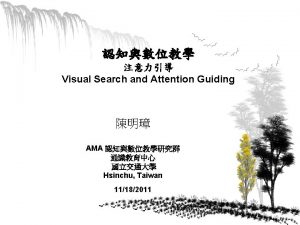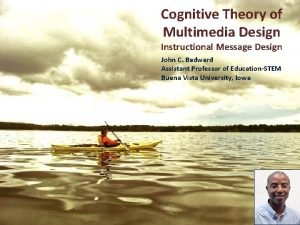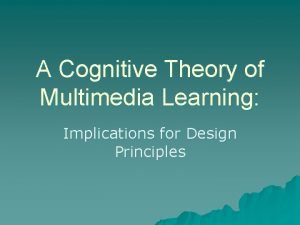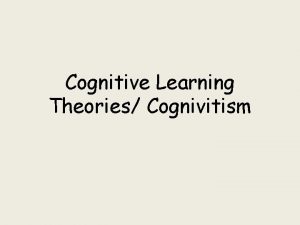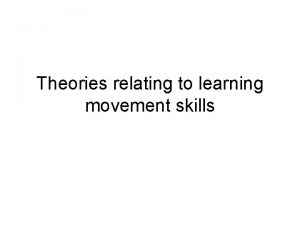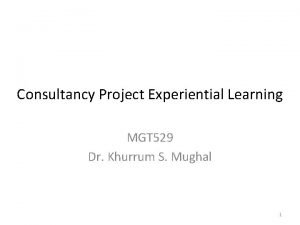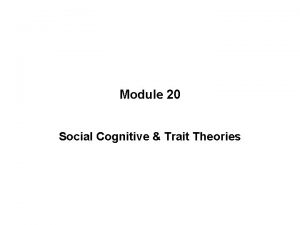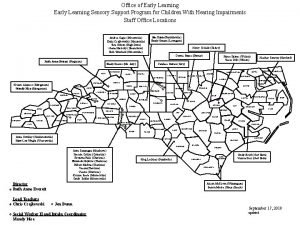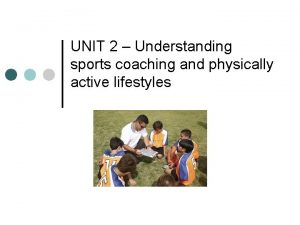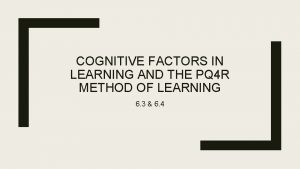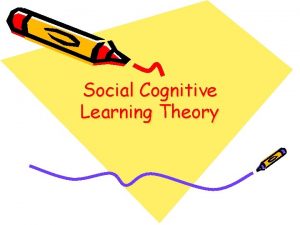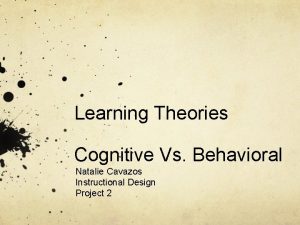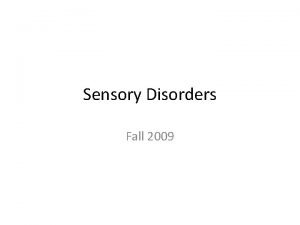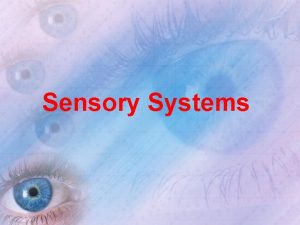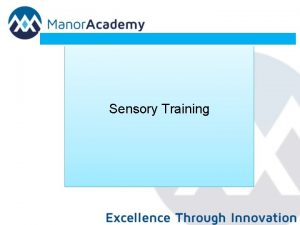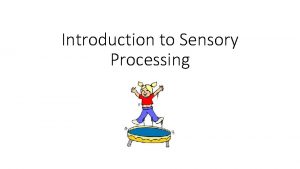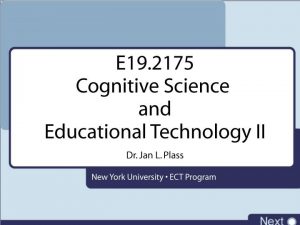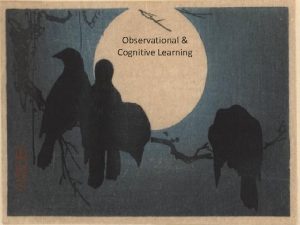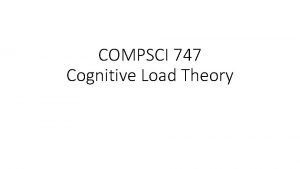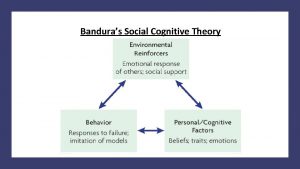Cognitive Theory of Multimedia Learning MULTIMEDIA PRESENTATION SENSORY

















- Slides: 17






Cognitive Theory of Multimedia Learning MULTIMEDIA PRESENTATION SENSORY MEMORY WORKING MEMORY LONG TERM MEMORY The auditory/verbal channel Spoken Words Ears Printed Selecting words Sounds Selecting Pictures Eyes images Organizing words Organizing Images images Verbal Model Pictorial Model integrating Prior Knowledge The visual/pictorial channel (Richard E. Mayer, 2001) All the principles for media learning are to attract attention, reduce split attention, reduce the negative cognitive load … of audiences 6

動機與目的 to locate the relevant information easily, when guiding explaining questioning discussing thinking Screen Visual Information Control Instructor Presenter guiding explaining questioning discussing Students Audiences Selection Organization Integration Students have enough time to process the information delivered by the instructor Communication and Synchronization Relevant (essential )information is changing instruction. Providing a more effective, friendlyduring environment Students have selection to select andand organize the information and then to reduce organization loading, they can think, such process will be repeated. In order to extract information learners are forced to split their attention. and facilitate integration. 7

Introduction What kind of environment can support instructors to follow principles of multimedia learning? Power. Point? John Sweller The use of the Power. Point presentation has been a disaster, It should be ditched ACT!! R. Tufte. Power. Point? Is it possible Edward to improve The cognitive style of Power. Point: Pitching out corrupt within Power. Point But Power. Point is one of the most popular soft wares, every one gets used to it. Even overuses it on instructional design! 8

Introduction • What’s a Trigger-based Animation (TA)? – a trigger is an object which controls (a sequence of) customized animations – an object can be controlled by more than one trigger. – Information can be triggered in predesigned or optional sequence. T 1 1 1 1 All Seq seq 1 8 3 4 5 6 7 C A 15 6 1 4 10 20 35 56 1 3 10 21 28 2 B 1 1 5 15 35 70 1 1 6 21 56 1 7 28 1 Pascal’s Triangle ( Yanghui Triangle, 1303 AD 9 )

Introduction Trigger- based Animated Instruction TAI Trigger- based Animated Presentation TAP Visual Fractals Leaping Iterated Function System Multimedia Learning Theory Cognitive Load Theory Cognitive psychology Trigger- based Animation TA Symmetrical Patterning . . . Structural Cloning Method SSC A MA AActivate Mind indand ttention Art of M ttract athematic M AAttention Animation Platform Power. Point & VBA 10

示範 - Perception Connection Context Effect Motion Induced Blindness read or raed Ehrenstein Illusion Counting Gestalt Theory Tell Color 11




結論 Screen Visual Information Control Guiding & explaining Students Instructor Audiences Verbal Presenter Information Selection Organization Integration Questioning & discussing Communication and Synchronization Providing a more effective, friendly environment to reduce selection and organization loading, and facilitate integration. 15

Thanks Supported by National Science Council Taiwan National Chiao Tung University Center for General Education Department of Applied Mathematics Degree Program for E-learning 16

 Cognitive theory of multimedia learning
Cognitive theory of multimedia learning Instructional message design
Instructional message design Cognitive theory of multimedia learning
Cognitive theory of multimedia learning Cognitive learning theory by jerome bruner
Cognitive learning theory by jerome bruner Cognivitism
Cognivitism Cognitive learning theory in marketing
Cognitive learning theory in marketing Humanistic theories examples
Humanistic theories examples Describe the cognitive theory of learning movement skills
Describe the cognitive theory of learning movement skills Cognitive learning theory
Cognitive learning theory Cognitive and non cognitive religious language
Cognitive and non cognitive religious language Trait theory vs social cognitive theory
Trait theory vs social cognitive theory Early learning sensory support program
Early learning sensory support program Cuadro comparativo e-learning m-learning b-learning
Cuadro comparativo e-learning m-learning b-learning Sensory stimulation theory
Sensory stimulation theory Autonomous stage of learning
Autonomous stage of learning Cognitive factors in learning
Cognitive factors in learning Cognitive factors in social learning
Cognitive factors in social learning Cognitive vs behavioral learning
Cognitive vs behavioral learning
